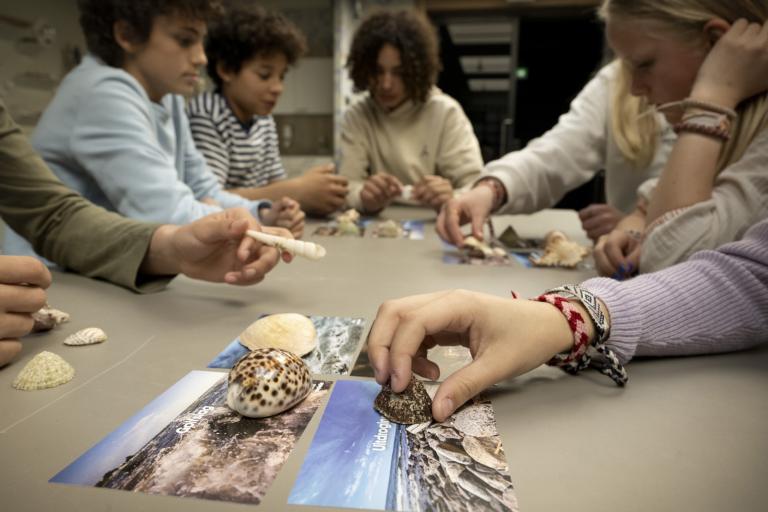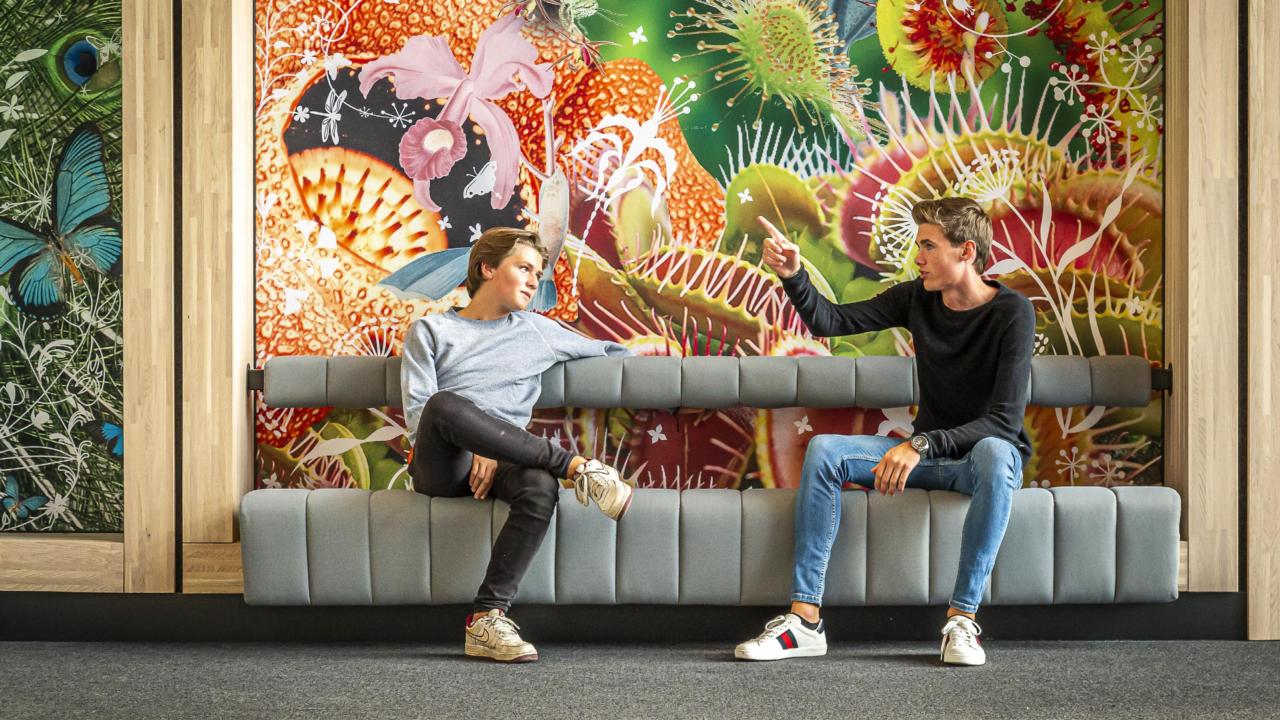
Why did so many kinds of dinosaurs exist? During this workshop, pupils will be introduced to the process of evolution in a fun, playful way. What makes species change over time? After a visit to the “Dino Era” gallery, pupils will use different game-based teaching methods to learn about arthropods and shells. They will also experience biodiversity first-hand in the “Life” gallery. Together, we will talk about the conditions you need for evolution to occur: variation, heredity and selection. We will also look ahead to the future. How is global warming affecting the evolution of species? We will close the workshop by talking about humans: what characteristics of our ancient ancestors can still be found in our bodies today?
Everything you need to knowin a row
- Workshop
- Target group: Year 2 and 3 of secondary school (13-15 years old)
- Length: 120 minutes
- Number of pupils: at least 15, but no more than 36
- Areas: “Present” workshop area, “Dino Era” & “Life” galleries
- The school will supply: 2 supervisors
- Naturalis will supply: 2 supervisors
- Main objective: Pupils will learn what evolution is: how species change and new species emerge over time.
- Keywords: evolution, variation, natural selection, sexual selection, selective pressure, descendants and heredity.
Course of the programat the museum
The program consists of four separate parts. The schedule given below is an indication only.
0-10 minutes: “Dino Era” gallery
An education assistant will give an introduction meant to instill a sense of wonder and help visitors get oriented. This introduction will focus on the characteristics of different animals from the age of dinosaurs. Pupils will complete a short assignment to help them explore the gallery and the characteristics these animals have in common – as well as the ones that make them unique.
10-65 minutes: workshop area
After a short discussion about dinosaurs, the pupils will play a game that teaches them about variation by looking at the different arthropods in front of them. This will be followed by a brief presentation that covers variation, descendants, heritable traits and selective pressures. Using shells as an example, pupils will learn what selective pressures are and how they can influence the changes species undergo over time. Next, sexual selection will be discussed based on an election to choose the most beautiful and strongest animal in the world.
65-95 minutes: “Life” gallery
In the “Life” gallery, pupils will see many kinds of real animals. By doing an assignment, they will look closely to see which animals might be able to adapt to tomorrow’s warming planet. What characteristics will be useful in the future?
95-120 minutes: workshop area
Back in the workshop area, the pupils will share their ideas on which animal will survive the longest on Earth, and explain why. After that, they will find out what scientists have to say in answer to the same question. After a brief summary of what evolution is, we will play a short game that helps pupils discover which characteristics of our distant ancestors can still be found in the human body.
Booking infoprepare your visit
Everything you need to know about practical matters such as parking, lockers and house rules.
